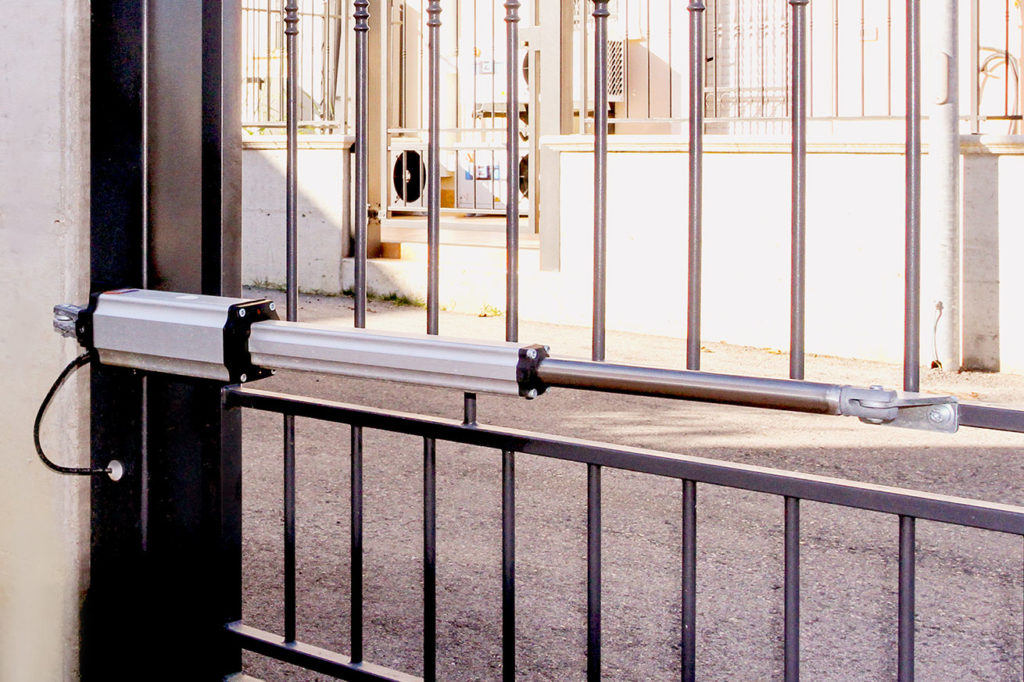An optimal installation is the one that offers the best opportunity for your customer and the most suitable machine for use. In this article we try to understand the differences between mechanical and articulated actuator.
What is the linear actuator
Electric linear actuators are electromechanical machines capable of transforming a rotary movement into a linear one. Among the automations for gates, these are the components that provide both push and pull movements but can also be used to lift, slide heavy elements such as a gate or a barrier, through the induction of a simple command, as can be the click of a button on the remote control.
A good example is the VDS Automation PM and PM1 models that offer you the opportunity to have a solid and durable machine with all the assistance of the Italian manufacturer and VDS technicians available for suggestions and information.
• Here you will find an excursus on the characteristics of the PM / PM1 linear actuator
• Go to the technical characteristics of the PM linear actuator
• Go to the technical characteristics of the PM1 linear actuator
What is meant by an articulated actuator?
In the field of gate automation the articulated actuator, or rather, the articulated arm actuator represents a fundamental machine for managing the opening and closing of swing doors (one or more), even in a coordinated way.
An example is that of the IBIS articulated actuator, for one hinged door or two, available in kit, which gives you the versatility of a silent and high performance gearmotor, suitable for doors up to 2.5 meters.
The gearmotor is solid and made of die-cast aluminum, while the gears are made from solid steel and cast iron. The arm is anti-shearing and powder coated for a longer life even in complex climatic conditions.
• See the solutions for your articulated arm actuator
The load that the actuator will have to sustain is a determining factor in choosing the right machine and the right power. The load capacity defines the different types of components necessary for the work required. It is important to determine both the type of movement that the actuator must operate (pull, thrust, vertical or horizontal movement) and the stroke of this movement in terms of length or amplitude. This will also be a necessary data in order to calculate the right diameter of the internal and external tubes of the actuator.
Speed needed
The necessary speed is a fundamental parameter when choosing an actuator. Not all mechanisms or materials are compatible with high speeds. Generally, actuators with articulated arm are able to develop a lower speed than linear ones, but this basic concept can be strongly influenced by the load that the actuator must bear.
A large load and the request for inadequate speed to it, in fact, in addition to the wrong choice of the type of actuator, can cause rapid wear of the components, the need to intervene with recurring maintenance and perhaps with the replacement of parts, thus generating the inevitable customer dissatisfaction. A damage to you and your business that you cannot afford.
Working cycle
The work cycle defines the relationship between the operating times and the rest times of an electromechanical component. The work cycle can be extremely different depending on the type of automation we are talking about and the environment in which it is installed. For exemple the gate of a production company with hundreds of employees will have a much higher work cycle than an automatic gate of a private home.
It’s an important factor to take into consideration when choosing an electric actuator, the materials from which it is made and its mechanisms, as an accurate definition of the work cycle gives the devices an optimal life span and limits the speed of mechanical components wear or any overheating.
What are the advantages of electric linear actuators?
Electric linear actuators are extremely versatile tools, they can push, pull or lift loads in an automated way. The components with which it is composed allow to obtain a great sturdiness of the machine: a linear or articulated mechanical actuator can move even very heavy gates and at the same time remain compact and adaptable to many different types of installation.
The different types of mechanical actuators and methods of use
Right angle or “L” electric actuators
In this case the motor is perpendicular to the screw and the mechanisms are activated by helical wheel gears. The L-shaped actuator is generally quieter than the parallel one but allows fewer variations on speed ratios.
Electric actuators in line
Suitable for tight and confined spaces, they offer a minimal footprint. In this type of actuator, the motor is aligned with the arm.
• Go to the technical characteristics of the PM linear actuator
• Go to the technical characteristics of the PM1 linear actuator
How to choose the right and long-lasting actuator?
Choosing an actuator for an automatic gate can be decisive both to retain your customers who, happy with your good work, can make you find new jobs, or call you for periodic maintenance.
A good actuator is an efficient machine, built with awareness of use, which has the right power based on the use to be made of it and is installed according to all user needs. Rely on VDS Automation for all the assistance you need: from training to specialist advice. Become a VDS Automation installer and recommend components produced entirely in Italy by highly specialized personnel with quality raw materials. The design and construction of the molds, the production of mechanical parts, such as gears and drive shafts, with sophisticated numerical control machinery, the development of the control panels and the assembly of our kits and the strict final tests take place within the VDS factories.
Fill out the form and contact us immediately.

